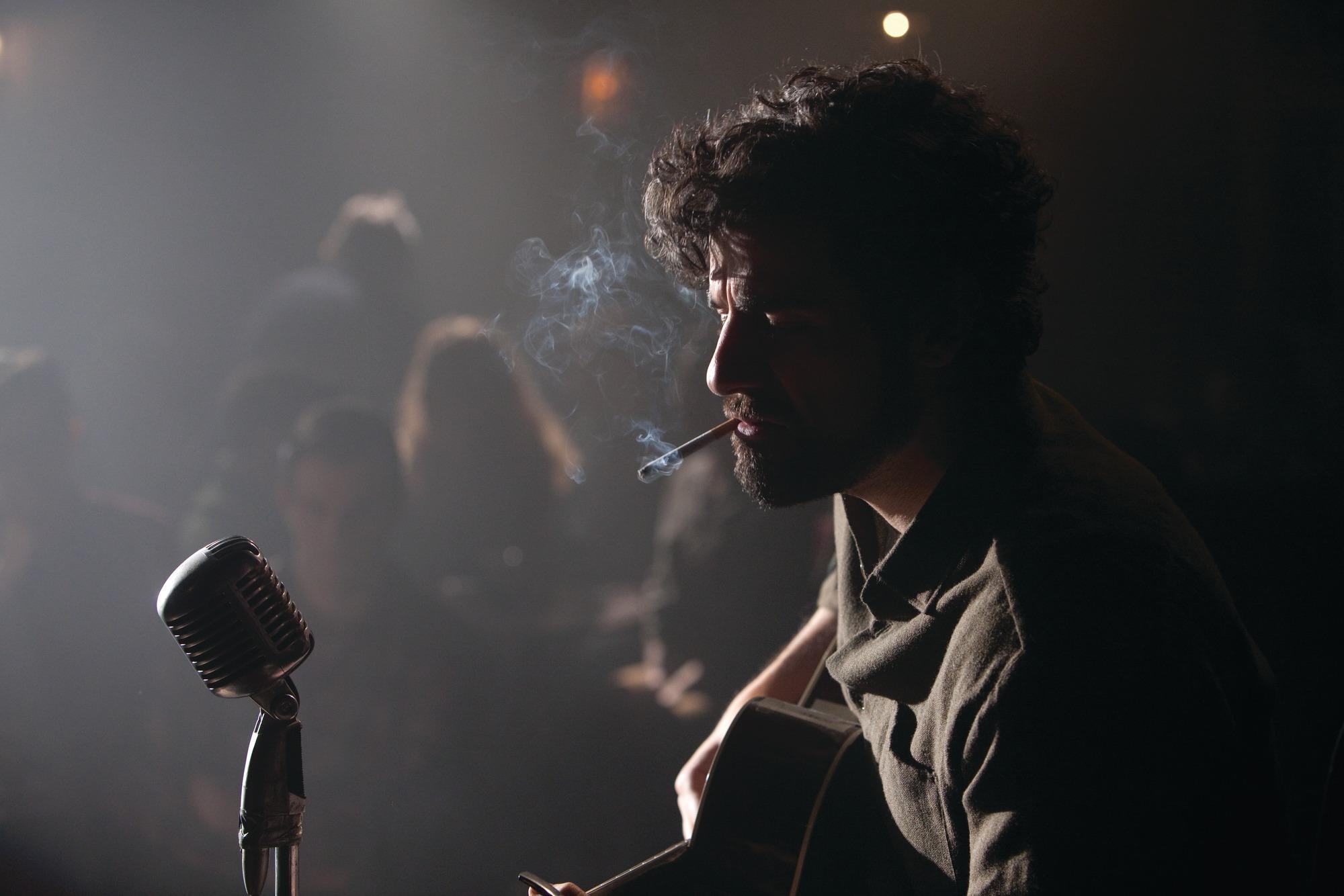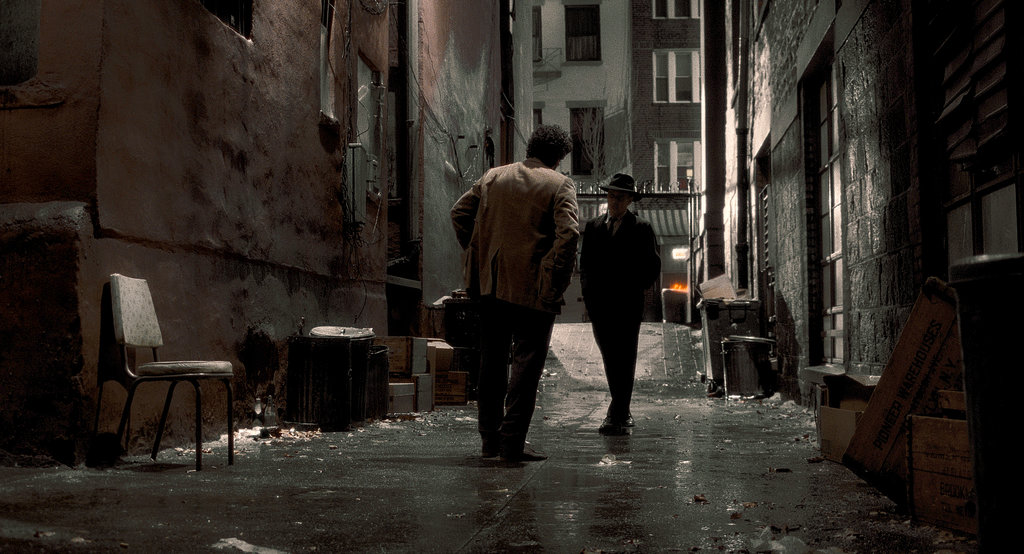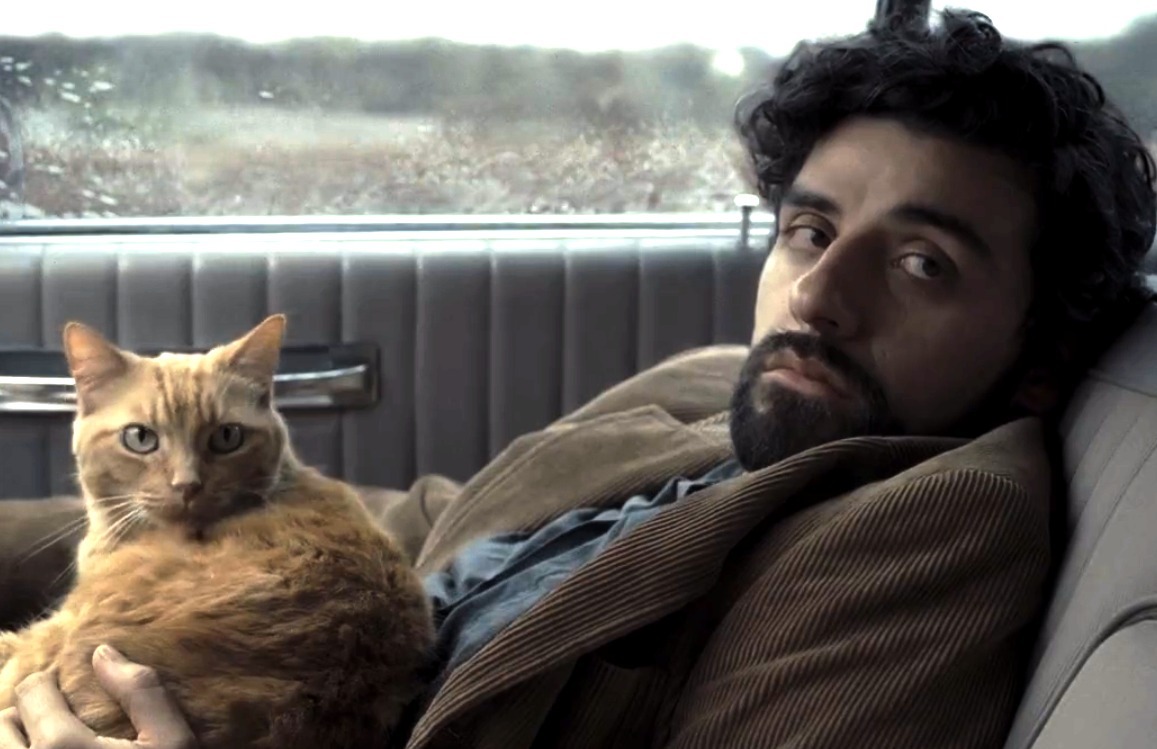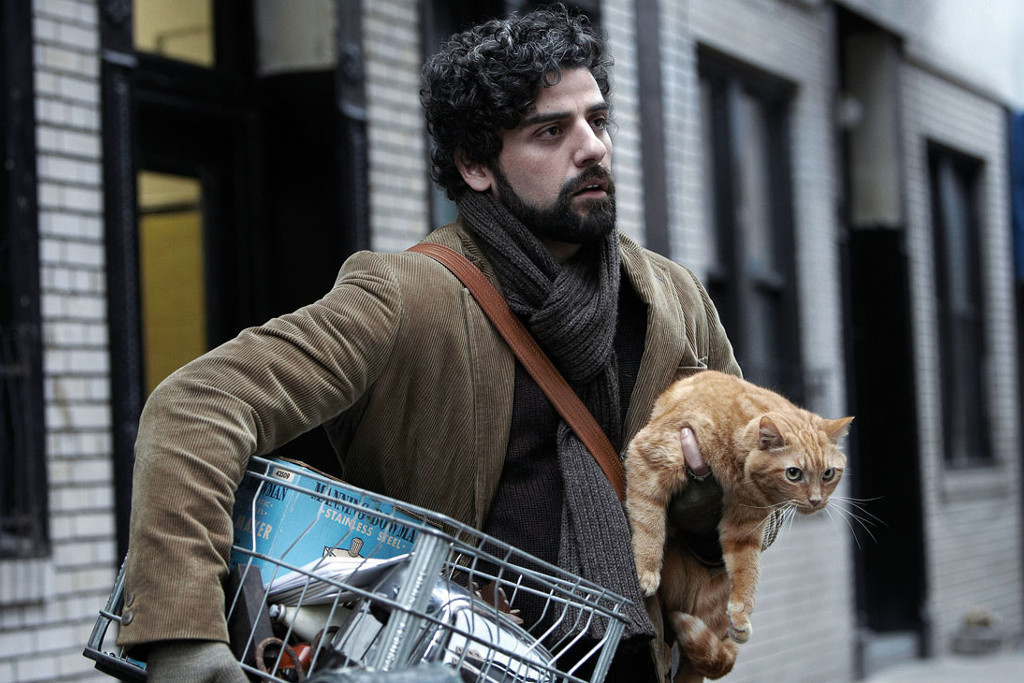Table of Contents Show
I waited throughout the Coen Brothers’ 2013 film Inside Llewyn Davis for, well, something . . . anything. Maybe for John Goodman’s character to be revealed as a forgotten gem from days gone by. Or for a soul-awakening, lyric-inspiring meet-and-greet with a surprise love child. Honestly, I even held out until the very end, thinking (wishing, really) that the “friend” in the alley turns out to be a big man in charge at some esteemed record label.
But nothing happened. The credits rolled by as my left eyebrow arched in the typical “That’s it?” frustration. There wasn’t a single million-dollar embezzlement or a clogged wood chipper. Not even a young, hot George Clooney poorly lip-synching in overalls. Then it hit me — right between comparing this film to its much more impressive counterparts, I thought about how this particular ending looped right back to the beginning (and how the most emotion I felt for the past two hours was for an unwanted furry companion). This film says everything about life with a plot that seemingly says nothing.

We look to film for numerous reasons: to be inspired, to laugh, to escape, to cry, or to see ourselves (or the person we want to be) on screen. When Llewyn Davis leaves the audience with a broken face and bruised stomach, no one wants to be him — yet, we are all him. Some for a little while, some for a while longer, and some for our entire lives. We have a dream that we’re chasing or a talent that we’re exercising. We’re sacrificing ourselves while forever loathing the idea of just “existing” in the real world.
But this story doesn’t have the happy ending that we’re all growing impatient for. There’s no big break, nor a sigh of relief as we watch a fellow creative soul finally reap the rewards of his hard work. The film leaves you with a weight that sits on your chest, disguised as a dreary narrative, but then quickly sinks with unease. The world we turn to as a means of hope, one filled with movies and make-believe, has instead illuminated our deepest fear. Everyone has a dream, everyone has your dream, but even those with the most talent are crashing yet again on a one-night-stand’s couch.
Inside Llewyn Davis: A Re-watch Reflective Masterpiece
This film’s quiet beauty is an after effect, a mature appreciation for the fact that not everyone can be Beyoncé or J.K. Rowling — in fact, the majority of the dreamers never will be. Inside Llewyn Davis isn’t a bleak or cheap, negative spin, but a reality that everyone understands is a possibility . . . just not for them. The Coen Brothers piece together a stunning story of self(ish) discovery, 1960s folk music in New York City, and a rose-less colored view of what it means to be human.
People sleep with their married friends. Their married friends aren’t happy. The well-dressed man with all of the stories is a drug addict. The poet goes to jail. And the cat gets left behind. Perhaps the hardest pill to swallow is that Llewyn Davis, played by Oscar Isaac, is a phenomenal, hair-raising, subtle-tear-inducing singer. In fact, he is the most talented amongst the hundreds of others trying to make it big — yet, he is the one who has to sing for his dinner.
Fame And Success, Talent And Stress
It should be mentioned that Justin Timberlake and Adam Driver make a few appearances in this film. And although immensely talented in their own right, their characters — including the boring, do-good newbie Mitch who shares a room with Llewyn Davis — are campy sell-outs who are frustratingly pale compared to Davis.
Sure enough, the lack of luck or appreciation for his art is boring the first time around. Davis is just drifting through time and space, with a friend’s cat as the only thing keeping us from exiting Prime Video in exchange for a better story, a better look into the lives of the people who actually deserve a movie. But it just might take a second time to appreciate the cruelty of it all… to appreciate Inside Llewyn Davis.
The Beginning Is The End…
Even the first time watching the film, you’ll immediately recognize the familiarity of the scenes and situations as the end crawls near. It sparks a rush of adrenaline as the last thread of hope lingers in our hearts, screaming for Llewyn Davis to find happiness. But the woman just gets heckled like a night we hadn’t remembered, and a semi-dapper man approaches a drunken Davis. We are back to the beginning, or really, the end before the beginning. You see, the story begins with Davis waking up at an Upper West Side apartment of the parents of his former singing partner, the Gorfeins.
We assume it’s a common trend for him to put people out due to his careless acts. So the audience goes through his life, with a couple of tidbits along the way about what really happened before Davis waking up to accidentally letting the cat loose — starting the movie’s journey. But it isn’t until Davis’s fatal rejection that we start to realize that he had found his way to the bar, the Gaslight Club, where he was hungover from in the beginning, with the same woman who he apparently heckled the night before everything was put into motion. And that man with the hat? Yeah, he’s the woman’s husband.

This choice in circular storytelling foreshadows and simultaneously seals the tragedy of Llewyn Davis. He encounters suicide, drunken brawls, missing felines, abortion, and hitchhiking, all in the pursuit of stardom. But with his guitar afar and his luck run out, there seems nothing left for Davis except for a swift punch to the gut and a final blow to an impossible dream. It’s a never-ending, vicious loop of talent, rejection, and an alley of broken spirits.
“If it was never new, and it never gets old, then it’s a folk song.”
Llewyn Davis
A Cat, A Child, And A Calling
Perhaps the best character — and the only other one really worth mentioning — is the Gorfeins’s cat, Ulysses. After finally getting up from the couch, Davis leaves a note and the door ajar for a second too long, putting the feline’s care solely in his hands. Unable to return Ulysses, the two embark on a touching yet devastating journey together.

The cat represents what Davis lacks: responsibility and the capacity for enduring love. Ulysses is also a means of self-reflection, a spiritual guide if you will. He is able to survive, like Davis, under extremely improbable conditions and always finds his way back to the beginning. But right when we think that the purpose of the film is the relationship between these two, we learn of Davis’s love child and his unwillingness to properly care for anything, leading to the heart-wrenching destruction of his relationship with Ulysses.
Yet the cat returns, serving as an ominous and tearful reminder of how the chase of what we long for can, in turn, be our demise. Llewyn Davis lost the cat, and his career, due to his own arrogance and selfishness. He, himself, is lost in a cycle of barely surviving, barely loving . . . his passion and talent in shambles. As soon as Ulysses seems to be gone forever, the audience realizes how tightly we clutched to the only good thing in the life of Llewyn Davis, something that he fails to understand.
Sometimes, Most Times, Failure Is the Only Option
Our minds are constantly swirling with scenarios, dreams, ideas, thoughts, and doubts. But it was almost insulting to see so much despair, so much bleakness, thrown on the big screen with such subtlety and beauty. It was foreign to me — at least when it came to an “origin” story like Inside Llewyn Davis. However, this film may be the only one that made me like it for the very reasons why I hated it. Life is messy, dreams die, and even the most deserving people get screwed in the end, doomed to scrape by life chasing after something out of their reach.
Failure is never really an option for Hollywood — or at least not an option if they want people to fill the theater. But failure is a fact of life, and Inside Llewyn Davis brings this to light. Not only failure but the reality of never getting anywhere with the talents and dreams you carry so close to your chest. The odds are a far cry from being in your favor, and this film does what so few have — tell the gut-wrenching truth. Something that I didn’t want to see the first time.
